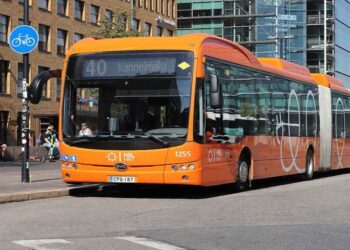Aéroports de Paris Ingénierie (ADPI), a subsidiary of the French airport operator Aeroports de Paris group (ADP), has received a contract to revamp the runways at Taïwan Taoyuan international airport.
Working in collaboration with the Taiwanese design and engineering office Sinotech, ADPI will complete the studies and thorough design for the modernisation work to be carried out on its two existing runways and associated taxiways.
The €150m project also involves building an added quick exit lane and additional parking areas, in addition to extending the south runway 100m west and 350m east, increasing the overall runway length to reach 3,800m.
After completion of the expansion and redevelopment project in 2014, the runway will be able to accommodate wide-body aircraft such as the Airbus A380.
ADPI CEO Guillaume Sauvé said that the company has received the contract for its expertise in airport design and engineering.
“It marks a new stage of our development in Asia following our success in the call for tender for the extension of the Chongqing airport and the new terminal of the Haikou Meilan airport in the People’s Republic of China.”
According to ADPI, the revamp of access lanes and runways remains a complex and necessary operation, which has to be executed with minimum air traffic disruptions.
ADPI has previously received contracts to restore the runways at Djeddah (Saudi Arabia), Saint Denis (Réunion) and Huahine (French Polynesia) airports.
In January 2013, a joint venture of Parsons Brinckerhoff, Netherlands Airport Consultants (NACO) and T.Y. Lin International has received a $44m contract to develop the airport’s $1.66bn Terminal 3, which is being built as part of $15.5bn investment to handle traffic growth.
The hub of Taiwanese carriers including China Airlines and EVAAir had handled 27 million passengers 2012.
Airservices Australia commissions Integrated Tower Automation Suite at Melbourne Airport
Air navigation service provider Airservices Australia has commissioned an Integrated Tower Automation Suite (INTAS) at Melbourne Airport, for the safe, efficient management of air traffic.
INTAS has been provided by defense and security company Saab, along with partners NAV CANADA and Harris.
The commissioning of INTAS is part of Airservices Australia’s National Towers Program (NTP) initiative to modernise or replace the core ATC technology in its towers.
INTAS was developed based on NAVCANatm technology that was customised to meet the specific needs of the NTP initiative.
It is a fully harmonised suite of ATC tools that offers Airservices controllers with a common, modern set of key ATC systems and capabilities in a single customisable platform.
NAV CANADA provided a modified version of its NAVCANsuite of ATC tools, Harris supplied the voice communications system, while Saab provided overall project management and system integration as well as integration of surface automation tools.
Saab ATM general manager Ken Kaminski said: “INTAS has successfully met Airservices’ requirements for a modern, flexible air traffic control solution that can seamlessly scale to any size airport or any controller working position.
“Providing controllers with a common set of tools helps ensure safety of operations, increases efficiency and streamlines training and maintenance.”
NAV CANADA vice-president and CTO Sid Koslow said: “The successful implementation of INTAS in Melbourne demonstrates its flexibility and capability to integrate flight data, advanced air field lighting control, and fused air and ground surveillance with safety logic in a large complex tower.”
INTAS features a controller working position with up to four touchscreen monitors to display data and common input devices.
It integrates electronic flight strips, operational data management, digital automatic terminal information services, voice communication control system, and electronic surveillance system.
Saab noted that INTAS architecture supports any tower position and is fully scalable to any size tower.
Melbourne is the fourth air traffic control (ATC) tower to receive the modern INTAS platform after Adelaide, Broome and Rockhampton airports.
































